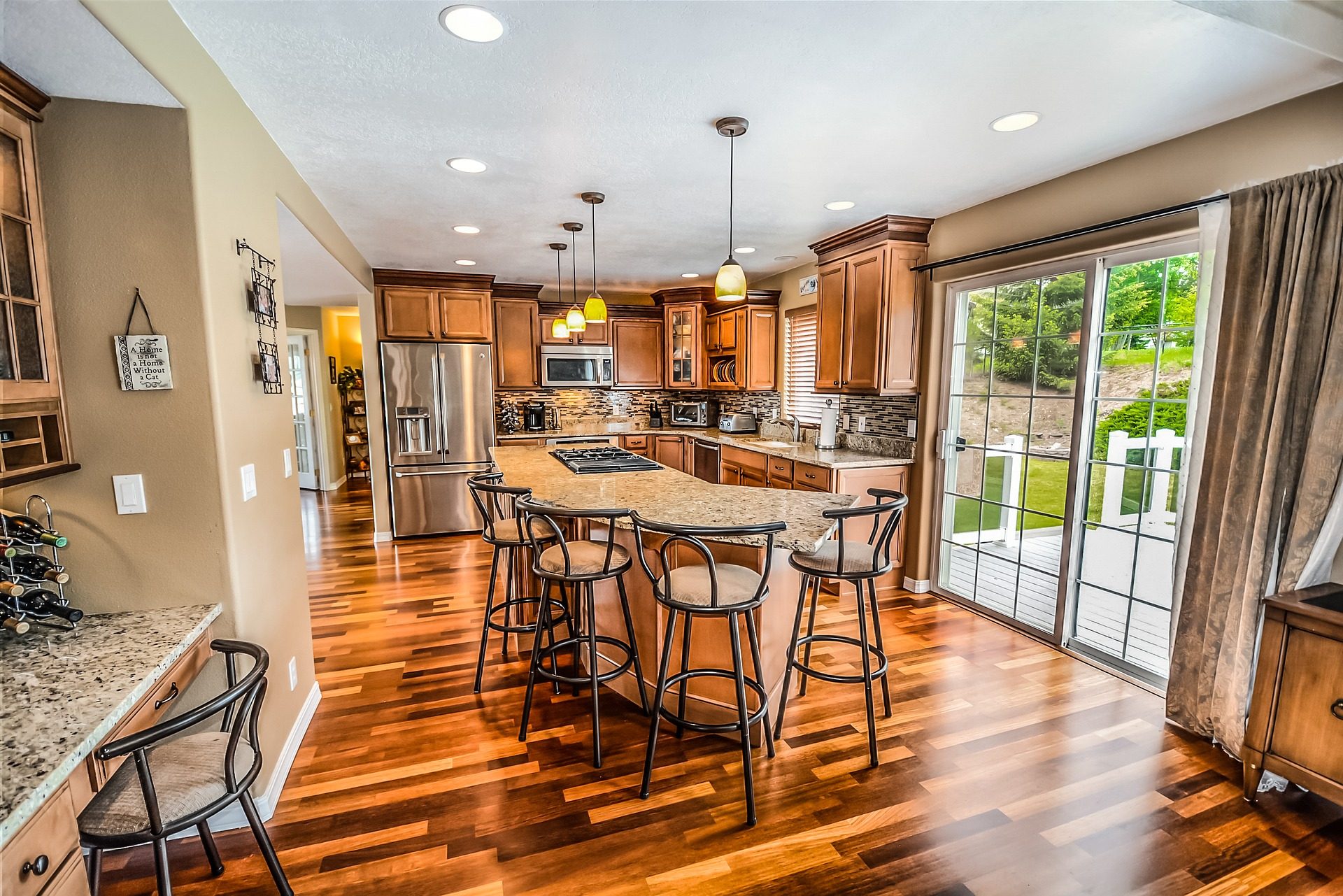
While hardwood floors are durable and long-lasting, they need proper care and maintenance. It’s also important to understand the effects that moisture has on wood, so you can keep your floors looking beautiful and new throughout their lifetime. You may not realize this, but wood stores water even after it is cut, with fibers acting like a sponge to absorb and release vapor into the atmosphere.
This means that wood floors, doors, furniture and cabinets will expand and contract with the rise and fall of humidity levels. Different species of wood retain more water than others. The tendency to warp with moisture has a lot to do with how the flooring is installed in the first place. A reputable installation technician will acclimate wood to an optimal climate first.
Plus, wood products should be unpacked and stacked within the room so the air can circulate around them, allowing humidity levels in the wood to orient with the surrounding environment, thereby reducing expansion and contraction. A gap should also be left around the floor’s perimeter, covered by baseboard, at the time of installation.
Problems in Hardwood
There are many factors that can lead to moisture-related problems, such as poor planning and installation, as well as lack of maintenance. Here are some of the most common problems:
- Gapping: When a space is too dry, planks can separate, leading to thin gaps in between them. Some gapping is expected, but large gaps can trap dust and debris. This makes floors more difficult to clean and less comfortable to walk on.
- Cupping: When moisture levels are too high, cupping occurs. This is when wood planks get saturated and expand, bending the edges upwards to create a U-shape through the center of the plank. This is very noticeable and result in an uneven surface.
- Crowning: This is when floors have cupped and the homeowner mistakenly sands down the upturned edges in an attempt to fix the issue. While sanding is an option, it should only be done once humidity levels are normalized. When floors are sanded too soon, during contraction, plank edges that are lower than the centers can result, also creating uneven and uncomfortable floors.
Preventing Moisture Issues
Here are some steps you can take to prevent damage to your floors.
- Wipe up liquids from the floors as soon as they happen.
- Don’t use a wet mop when cleaning. Instead, use a broom or dry mop.
- Refinish your floors every five years.
- If flooding or a major plumbing leak occurs, remove all water quickly, using fans to speed up the drying process.
Contact Designer Wood Flooring
To learn more about our hardwood flooring installation and repair process, contact us today at
830-228-4866 in San Antonio, TX and 409-201-1967 in Southeast Texas.




